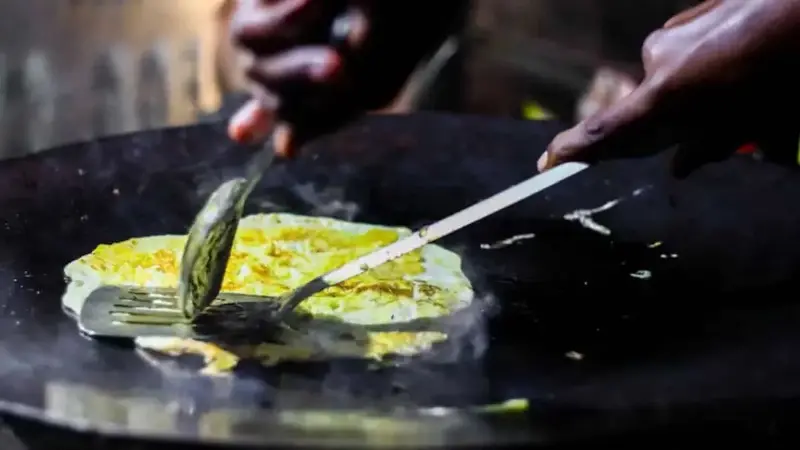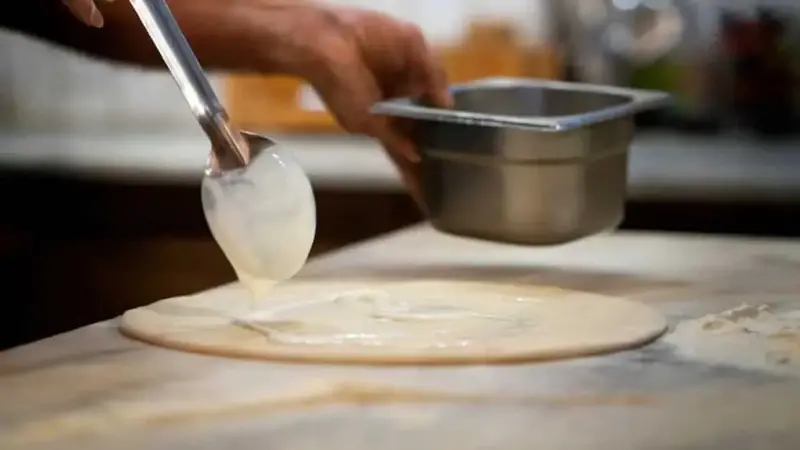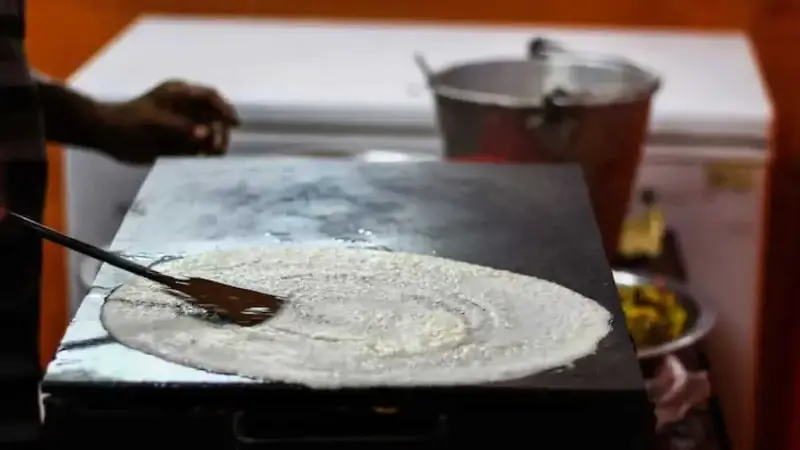
Making dosa right away may seem simple, but it requires a few clever tips to get it just right. Because instant dosa batter does not ferment like traditional dosa batter does, it takes skill and balance to achieve the ideal texture. Every step counts, from selecting the appropriate flour mixture to properly spreading the batter on the pan. The base ingredients for most instant dosa recipes are oats, rice flour, or semolina (sooji).
The secret is to properly mix, rest, and cook these ingredients because they don't rise like traditional urad dal batter. Your dosa's outcome is even influenced by how you heat and cool the pan. You can learn how to make instant dosa at home with the help of this guide's tried-and-true advice. These tips will guarantee better results every time, regardless of whether you're new to making dosas or want to hone your skills. A good non-stick pan, practice, and attention to detail are all you need. You can create crispy, golden dosas that taste exactly like the classic ones with a little perseverance and the correct techniques.
Utilise The Proper Flour Mixture And Allow The Batter To Rest
Selecting the correct flour is essential for a crispy dosa. Semolina adds a little body and rice flour adds crunch to a good instant mix. A spoonful of curd can also be added for Flavour and softness. Better binding of the ingredients is achieved by combining besan or oat powder. Rice flour alone may become brittle, so don't use it. To prevent lumps and guarantee a smooth batter that spreads evenly, always sift your dry ingredients. Even instant batter requires a rest period of 15 to 20 minutes. As a result, the flours are able to absorb water and slightly swell. Additionally, resting makes the batter smoother and spreadable. The dosa might tear or stick if you omit this step. While the batter rests, keep it covered and at room temperature. Check the consistency after resting; it should flow but not be runny. If necessary, add a spoonful of flour or water to achieve the desired consistency.

Image Credits: Freepik
Also Read: Top Tips To Keep Dosa Batter Fresh For A Longer Period Of Time
Adjust The Pan's Temperature And Spreading Properly
The secret to making the ideal dosa is to spread the batter evenly and adjust the pan temperature. The pan shouldn't be smoking, but it should be hot. If it sizzles and disappears after two to three seconds after a little water is added, the heat is just right. Overheating will cause the batter to clump and not spread evenly. The dosa will remain thick and uneven if it is too cold. Before beginning the next dosa, allow the pan to cool a little after preparing each one and wipe it down with a moist cloth. Once the temperature is good, pour a ladle of batter in the centre of the pan. Using the back of the ladle, gently spread the batter outward in circles. Move your hand smoothly without pressing too hard. Don’t go over the same spot again. With a little practise and the right pan — non-stick or seasoned iron — your dosa will turn out thin, crisp, and evenly cooked.

Image Credits: Freepik
Keep Butter Consistent And Add Oil When It's Needed
The batter consistency and oil addition timing both affect how crispy and golden the dosas turn out. Instead of being too thick or watery, the batter should be just thin and flowing. While a watery batter can tear and cook unevenly, a thick batter gives the dosa a chewy texture. Since rice or semolina particles have a tendency to sink to the bottom, always stir the batter before using it and adjust the thickness with cold water. Wait a moment after spreading and pouring the batter onto the pan before adding the oil.Using a spoon, lightly drizzle a few drops of oil in the centre and along the edges. Oil should never be added before spreading, as this could cause the batter to slip and not adhere to the surface. You can also use ghee or a butter and oil mixture for a crispy finish. Before releasing the dosa, allow it to cook until the edges are golden. Every time, this timing helps produce the ideal texture.
